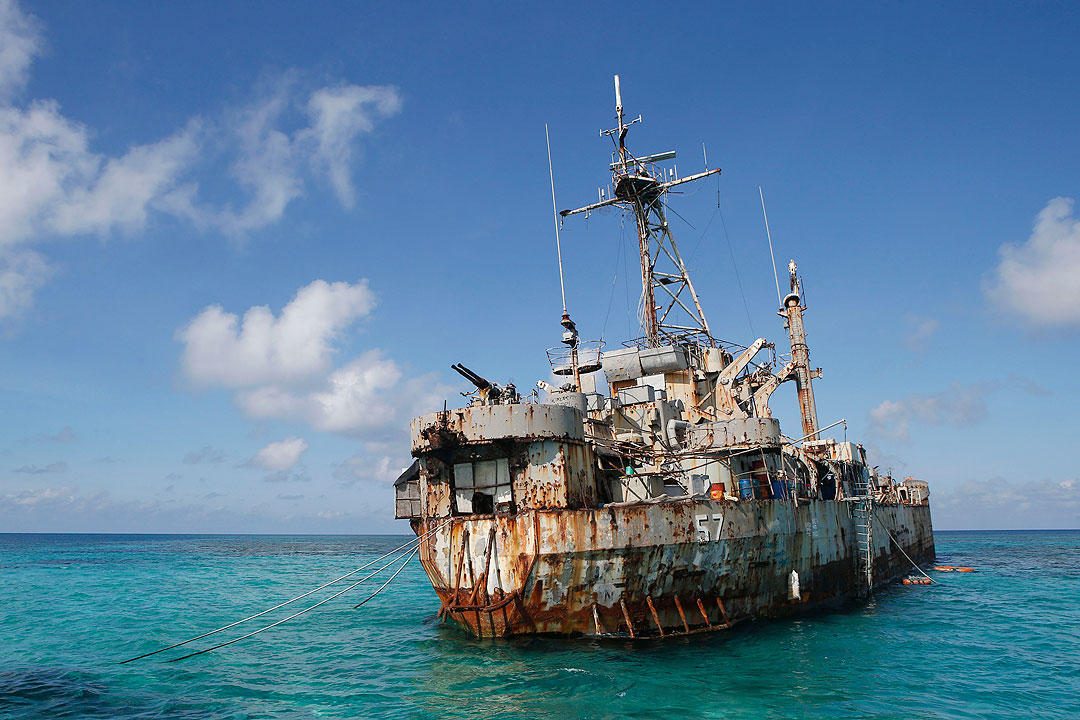6 of 10 Filipinos satisfied with gov’t handling of sea dispute with China

SIX of 10 Filipinos are satisfied with actions taken by the government of Philippine President Ferdinand R. Marcos, Jr. on the sea dispute with China, according to a Social Weather Stations (SWS) poll conducted days after a June 17 standoff at Second Thomas Shoal in the South China Sea.
Sixty percent of Filipinos said measures including joint patrols and military exercises with “allies, friends and partners” were “sufficient,” based on the June 23-July 1 poll commissioned by think tank Stratbase ADR.
Stratbase said 36% of the 1,500 respondents said these measures are not enough.
The poll showed that 72% of Filipinos wanted the Philippine government to boost security ties with other countries.
The Philippines conducted joint patrols within its exclusive economic zone (EEZ) in the South China Sea with the United States, Australia, Japan and France since last year, amid confrontations between its vessels and larger Chinese Coast Guard ships.
On June 17, Chinese forces with bladed weapons boarded Philippine rubber boats on a resupply mission to BRP Sierra Madre at Second Thomas Shoal and looted rifles, according to the Philippine military.
Philippine Navy forces fought with bare hands and one of them lost a thumb after the rubber boat he was in was rammed by Chinese forces, according to the Philippine military.
The Philippines grounded the BRP Sierra Madre, a World War II-era ships, at the shoal in 1999 to bolster its sea claim. The shoal is 240 kilometers off the coast of Palawan province and is about 900 kilometers from Hainan, the nearest major Chinese landmass.
The incident sparked discussions on the limits of the US-Philippines Mutual Defense Treaty, which compels both sides to defend each other in case of an armed attack, and prompted calls for joint resupply missions.
Stratbase ADR President Victor Andres C. Manhit said the Philippine government should “reinforce cooperation and elevate partnerships” with allies by conducting more joint patrols and military exercises within the Philippine EEZ.
“By conducting joint patrols with like-minded partners and allies, we are sending a strong message that the Philippines is not alone,” he said in a statement.
“Those who attempt to circumvent their obligations and behave aggressively will not be tolerated by the international community,” he added.
Days after the June 17 standoff, the Philippines and China met in Manila under their so-called bilateral consultation mechanism, but security experts doubted Beijing’s sincerity as a China Coast Guard ship (CCG) was deployed off the coast of Palawan and another Chinese ship known as the “The Monster” to Second Thomas Shoal.
The Philippine Navy on Tuesday said it was considering holding resupply missions to BRP Sierra Madre with several nations including the US, Japan, the United Kingdom and Australia.
China’s Monster ship, the largest coast guard vessel in the world, was spotted at Sabina Shoal on July 4, and Philippine Coast Guard (PCG) spokesman Jay Tristan Tarriela on Wednesday said the ship was still in the area.
He said the PCG had spotted another China Coast Guard ship near Lubang Island, which is just 40 kilometers west of Calatagan, Batangas province south of Manila. The ship was moving toward Palawan.
The Navy on Tuesday said they had detected four China Coast Guard vessels at Second Thomas Shoal, which is about 67 kilometers west of Sabina.
The Philippines last week marked the anniversary of a 2016 arbitral ruling that voided China’s expansive claims in the South China Sea, with statements of support from Philippine allies.
Mr. Marcos has pursued closer ties with Western nations amid China’s increasing assertiveness at sea.
Mr. Tarriela earlier this month said Manila had used Canada’s “dark vessel” technology in detecting China’s 12,000-ton Monster ship.
The SWS poll showed that 56% of Filipinos thought the government was doing enough to protect Filipino fishermen in the disputed waterway and in boosting the military.
Most Filipinos also said the government was doing enough to protect marine resources within its exclusive economic zone, and in referring the issue to international organizations like the United Nations and Association of Southeast Asian Nations.
Stratbase said 49% of Filipinos thought it was not enough for the government to demand for China to leave the artificial islands it had built and occupied within the Philippine EEZ. — Kyle Aristophere T. Atienza



